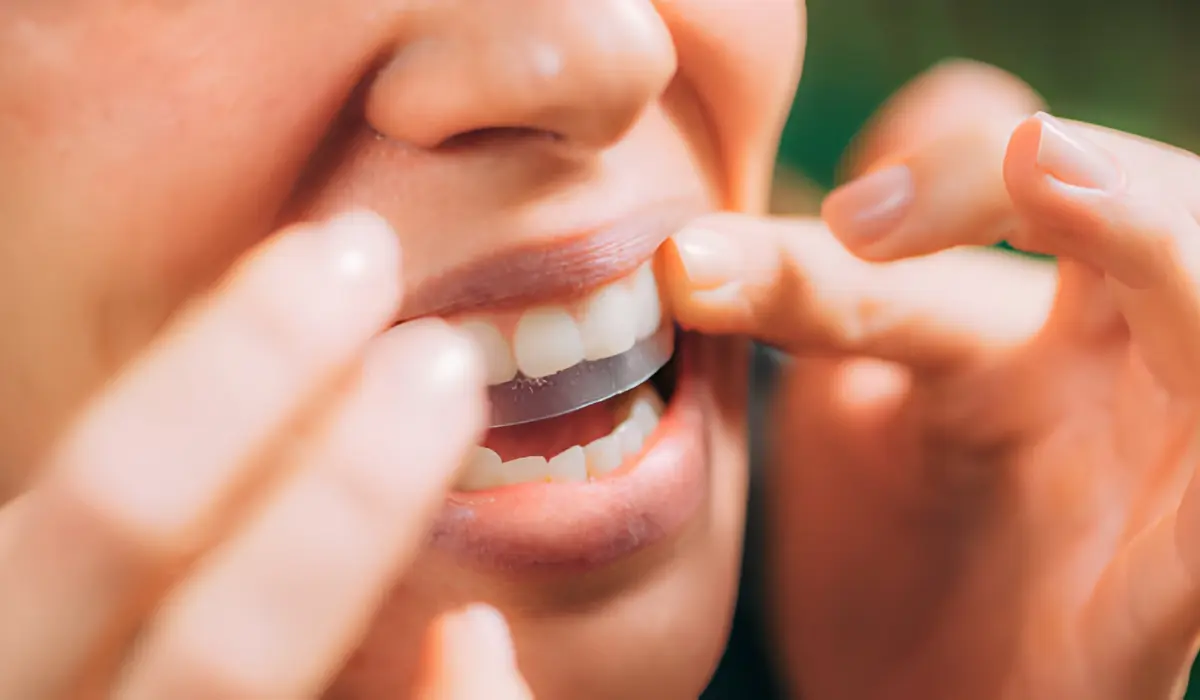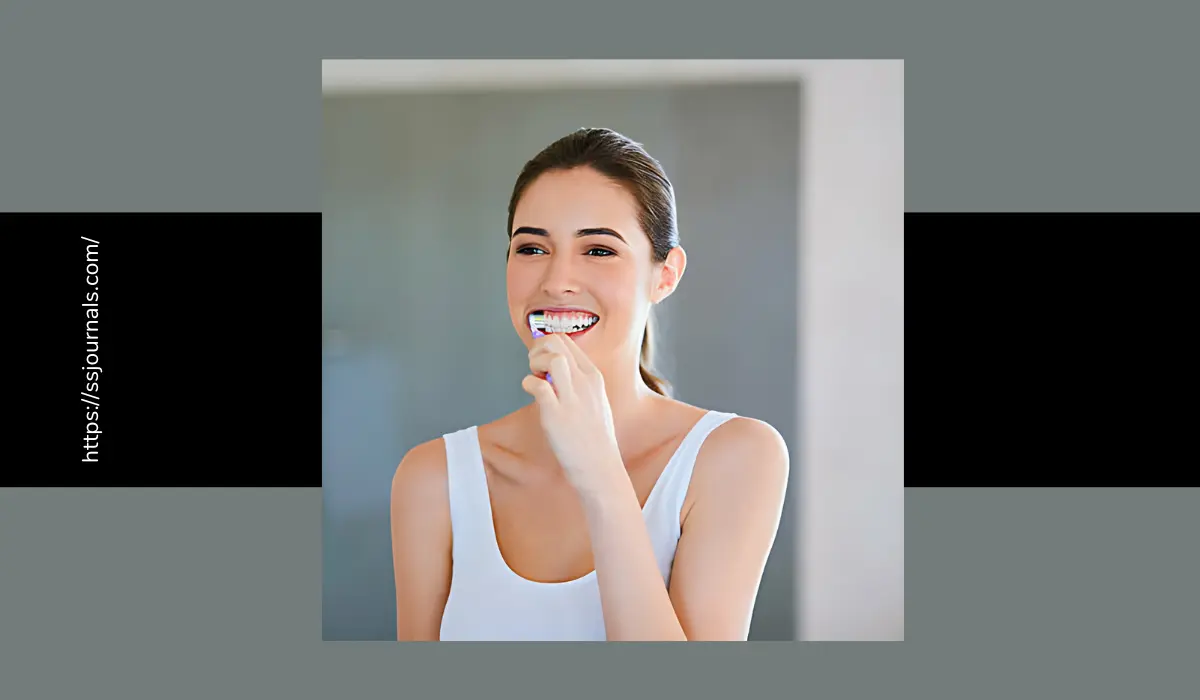Do you brush your teeth after whitening strips? With the popularity of at-home teeth whitening products like whitening strips, many people wonder what the proper protocol is for caring for teeth after using them. Whitening strips contain peroxide-based gel formulations designed to penetrate the teeth and lift stains.
But questions remain about proper oral hygiene practices post-whitening. Should you brush immediately, or wait? Does toothpaste impact results? Understanding best practices allows you to safely and effectively use whitening strips while maintaining dental health.
What are Whitening Strips?

Whitening strips are thin, flexible strips coated with a teeth-whitening gel containing carbamide or hydrogen peroxide that temporarily lightens teeth several shades by breaking down and removing both deep and surface stains. These disposable strips mold to the teeth and are worn for 30 minutes to one hour once or twice a day before being discarded.
How do Whitening Strips Work?
The whitening agent coated on the strip side adheres to the teeth’ surface when pressed against them, allowing the peroxide-based formula to penetrate below the enamel where stains reside. The oxygen molecules released from the gel act to lift and dissolve staining so that the natural whiteness of the tooth underneath is revealed.
Are Whitening Strips Safe?
When used as directed, whitening strips are considered safe for most healthy adults. However, overuse or misuse can lead to tooth sensitivity or gum irritation in some cases. Checking with your dentist before starting treatment allows them to assess if strips are a good option for your dental condition.
How Often Should I Use Whitening Strips?
Manufacturers provide specific instructions unique to their product formulas and concentrations regarding frequency and length of wear time. Typically, strips are used once or twice daily for 30-60 minutes for 10-14 days. Limiting treatments to 2 weeks at a time allows your teeth to rest between sessions.
What are the Risks of Using Whitening Strips?
Potential side effects of whitening strips relate either to misuse or sensitivity. Using them too long or frequently may cause temporary tooth sensitivity or gum irritation. However, these side effects usually resolve within days of ending treatment. Those with existing dental sensitivity issues face higher risks using any bleaching products.
Should You Brush Your Teeth After Whitening Strips?
Whether or not you should brush after using whitening strips depends on when you brush and what products you use. Most dentists recommend avoiding abrasives immediately after as the teeth enamel may be more porous and susceptible to the removal of freshly lifted stains or damage from aggressive brushing motions. However, you’ll still want to brush lightly before applying strips to remove plaque and after the treatment period ends to clear any gel residue.
Do you brush your teeth after whitening strips? The answer depends on timing. Right after removing the strips, hold off on brushing to allow the whitening gel to continue working.
✔ Brushing Teeth Before Whitening Strips
Dentists recommend brushing and flossing as normal before using whitening strips each time. Removing built-up plaque before applying whitening gel allows it to better penetrate the tooth enamel for optimum stain removal and whitening.
However, avoid using toothpaste containing baking soda or other abrasive ingredients immediately before applying strips. These can roughen the enamel surface and cause added sensitivity. Use a milder formula instead if brushing right before your whitening session.
Do you brush your teeth after whitening strips? No. You’ll get better results by waiting at least 30 minutes before brushing after you remove the strips.
✔ Brushing Immediately After Strips Inadvisable
Once you remove your whitening strips after the recommended treatment time, avoid brushing right away. At this point, the enamel remains porous and hydrated. Brushing too soon could damage the enamel or brush away freshly opened pores containing gel residues still working to lift stains.
Do you brush your teeth after whitening strips? Brushing too soon after can disrupt the whitening process and brush away newly lifted stains before they set.
Immediately rinsing your mouth with water only to clear the gel and then waiting at least 30 minutes before brushing gives the whitening agents the most effective window of stain removal. After half an hour, pores begin closing, and sensitivity to abrasion decreases.
✔ Whitening Toothpaste and Rougher Bristles to Avoid
When you resume brushing 30 minutes post-whitening, stick to your usual soft brush and mild formula toothpaste – at least for 24 hours after. Whitening toothpastes also contain abrasives to lift stains from the enamel. Pairing these with whitening strips could be too rough on recently whitened teeth.
Do you brush your teeth after whitening strips? Yes, but gently and with a mild toothpaste, not a whitening one.
✔ Brushing Required Before Next Whitening Session
Be sure when you apply whitening strips again the next day or night to brush as normal ahead of time. Skipping brushing allows new plaque to build up and bacteria to reproduce. For good dental and gum health, daily brushing and flossing remain critical even when using whitening strips for a limited period.
Do you brush your teeth after whitening strips? You need to brush before applying them again to avoid trapping plaque under the strips.
✔ Use Mild Toothpaste Formula Post-Whitening
For 24-48 hours after completing an intensive whitening strip course, brush as normal but with toothpaste free from harsh abrasives. Whitened teeth remain sensitive with pores that are more exposed during this period. A gentle toothpaste formula keeps newly brightened smiles looking their best while avoiding added sensitivity risks.
Sum Up
Knowing the best oral hygiene practices around using popular whitening strips allows you to attain visibly whiter teeth safely. While you don’t want to brush immediately after removing whitening strips, consistent daily brushing and flossing remain critical before applying them and in between sessions. Mild toothpaste is advisable for at least 24 hours after ending treatment. Avoiding other abrasive ingredients until pores fully close limits the chances you’ll brush away the effects of whitening treatments.
With the right protocol, over-the-counter whitening strips offer an affordable at-home method for removing deep and surface stains for whiter teeth several shades brighter with consistent use. However, they are not recommended for young children or those with underlying dental issues. Assessing risks and appropriate use lies with your dental professional. Schedule an appointment if considering using whitening strips for the first time just to ensure safety.
Abruptly ceasing whitening treatments can cause uneven whitening results. So once started, follow directions for full usage cycles. Temporary sensitivity that may occur generally resolves within a few days after ending usage. Combining the convenience of at-home whitening strips with proper oral care before, during, and after treatment allows you to reveal your brightest smile safely.
Now that you know when and how to brush around using popular whitening strips, are you ready to give them a try for removing stains at home? What other questions do you have?

